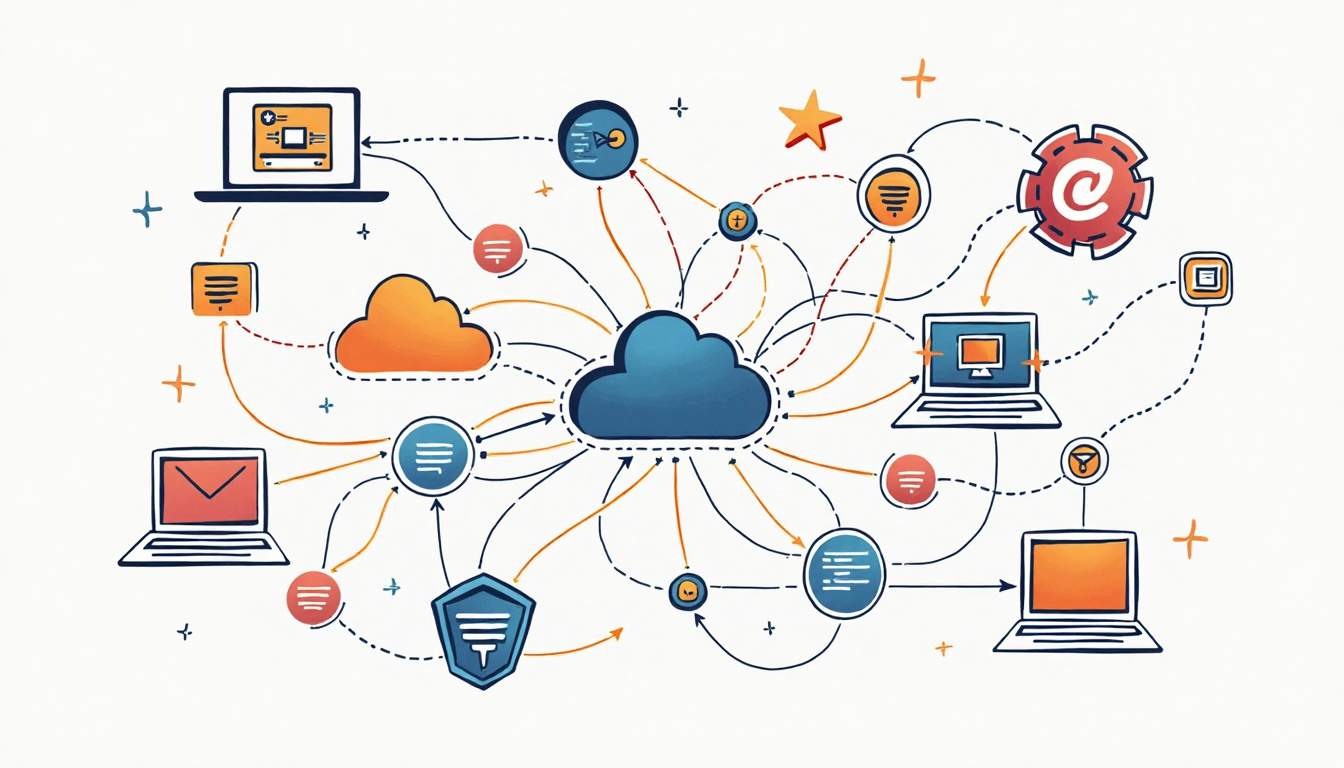API Economy Development: Building Integration Teams for Modern Enterprise Architecture
The explosive rise of the application programming interface (API) economy has turned integration from a back-office activity into a primary driver of digital value. Market analysts at ResearchAndMarkets estimate that global API management revenue will exceed USD 21 billion by 2028, reflecting compound annual growth above 25 percent. From banking to healthcare, connected ecosystems are the rule rather than the exception, and modern enterprises can no longer rely on monolithic applications to satisfy customers or partners. In this landscape, well-structured integration teams occupy the strategic front line, translating business objectives into seamless, secure, and observable data flows.
Building those teams is not merely a staffing exercise. It demands a nuanced understanding of the API economy’s direction, an architectural vision rooted in agility, and an appreciation of cost, risk and return. The following sections offer a pragmatic guide—starting with today’s market dynamics and ending with real-world case studies—to help organisations assemble integration capabilities that are as resilient as they are innovative.
API Economy Landscape Analysis
Enterprise interest in APIs has shifted dramatically during the past decade. Early initiatives focused on basic connectivity—payments gateways, mapping widgets, or internal service calls. Today, APIs underpin entire business models, enabling fintech firms to embed credit, ride-sharing companies to partner with public transit, and retailers to expand into third-party marketplaces. A 2023 study by Postman revealed that 89 percent of technology leaders view APIs as “mission-critical,” up from 63 percent just four years earlier.
This acceleration is fuelled by three converging trends. First, cloud-native architectures have normalised microservices and reduced the technical barrier to publishing interfaces at scale. Second, customer expectations around omnichannel experiences have increased the need for real-time data exchange between previously siloed systems. Finally, regulators in regions such as the European Union are mandating data openness—most visibly through PSD2 for banking and the Digital Markets Act—thereby forcing traditional players to participate in open ecosystems.
Yet opportunity comes with complexity. The API economy adds surface area for security threats, governance oversight, and performance bottlenecks. Organisations that treat APIs as one-off projects often create sprawl: duplicated services, inconsistent documentation, and fragile dependencies. A disciplined integration team must therefore keep pace with the market while enforcing standards that guard against technical debt.
Integration Architecture Design
A blueprint for successful integration balances autonomy with alignment. Leading enterprises adopt a layered architecture that separates concerns: an experience layer for consumer-facing APIs, a process layer for orchestrating business workflows, and a data layer that encapsulates legacy systems or third-party sources. By decoupling these layers, teams can iterate on user experiences without destabilising core systems of record.
Event-driven patterns, such as publish–subscribe models using Kafka or cloud messaging services, complement traditional request/response APIs and improve scalability under burst traffic. Meanwhile, a service mesh provides cross-cutting capabilities—traffic management, mutual TLS, and observability—without forcing developers to embed such logic in every microservice. Gartner’s 2024 Market Guide recommends this mesh-enabled “sidecar” approach as a best practice for hybrid environments spanning on-premises and multiple clouds.
An integration reference architecture also outlines governance controls: versioning rules, naming conventions, semantic management, and a single source of truth for API catalogs. When these foundational elements are documented early, integration teams reduce onboarding friction and accelerate future projects. The architecture then serves as a living asset, updated incrementally as new domains, partners, or security obligations arise.
Technical Skill Requirements
The modern integration team sits at the intersection of software engineering, security, and product management. Core skills begin with REST and GraphQL design principles, but extend to asynchronous protocols such as gRPC and AMQP. Proficiency in at least one mainstream API gateway—whether Kong, Apigee, AWS API Gateway, or Azure API Management—enables the enforcement of standards and traffic throttling.
Observability tools form the second competency pillar. Developers must instrument services using OpenTelemetry to gather traces, metrics, and logs. Without this data, root-cause analysis becomes guesswork, and service-level objectives (SLOs) remain theoretical. Security expertise rounds out the profile: OAuth 2.0, OpenID Connect, JWT handling, and dynamic secret management through platforms like HashiCorp Vault or cloud-native equivalents.
Soft skills receive equal weight. Integration often spans business units, external partners, and regulators; therefore, team members need diplomatic communication and documentation prowess. Business analysts versed in domain-driven design can translate requirements into bounded contexts, reducing the risk of “spaghetti APIs” that blur responsibilities. Together, these technical and interpersonal capabilities form a multidisciplinary unit equipped to navigate complexity.
Team Building Strategy
Successful organisations treat integration as a product, not a project. This stance influences hiring, incentives, and governance. Cross-functional squads—each containing a tech lead, two to four API engineers, a quality engineer, and a product owner—mirror the product-centric model popularised by Spotify’s tribe structure. Such teams own an API portfolio end-to-end, from backlog grooming to incident resolution.
Centralised enablement remains essential. A smaller group—often called the “API platform team”—creates shared landing zones, CI/CD templates, and schema guidelines. They operate as internal consultants, offering coaching and gated reviews for any service that exposes public endpoints. This dual structure combines autonomy with guardrails, letting feature teams innovate while maintaining enterprise-wide coherence.
Recruiting should focus on growth mindsets and adaptability rather than narrow tool expertise. Technology changes; curiosity endures. Pairing senior architects with early-career developers fosters knowledge transfer, and rotational assignments keep perspectives fresh. Finally, continuous learning budgets and internal hackathons demonstrate executive commitment, helping retain talent in a competitive market.
Quality Assurance Framework
Quality in the API domain reaches beyond functional correctness. An effective assurance framework tests behaviour, performance, security, and contract stability. Automated unit tests using frameworks like Jest or pytest cover business logic, while contract tests with Postman or Pact enforce the “consumer-driven” agreements that make microservices predictable for downstream teams.
Security testing is non-negotiable. Automated static analysis detects vulnerabilities in code, but dynamic scanning—incorporating OWASP ZAP or Burp Suite—in a pre-production environment uncovers misconfigurations such as overly permissive CORS headers or token leakage. Every high-risk API should also undergo periodic penetration testing conducted by certified ethical hackers.
Coverage reports and quality gates integrate with CI/CD pipelines, blocking deployments that fail critical thresholds. When combined with error-budget policies, these gates create an objective foundation for release decisions. Teams can then iterate rapidly without sacrificing reliability, knowing that each merge request passes through a battery of programmable tests aligned to enterprise standards.
Performance Monitoring
Even well-designed APIs can falter under real-world loads. Continuous performance monitoring provides early warning of throttling, latency spikes, and memory leaks. Standard practice involves three telemetry dimensions: metrics, traces, and logs. Metrics track quantitative indicators—p95 latency, request rate, and error percentages—while distributed traces illustrate the journey of a single call through interconnected services.
Alert rules must reflect business priorities. A payment authorisation endpoint tolerates no more than 300 milliseconds of latency, whereas a batch reporting API might withstand several seconds. Linking alerts to chatops channels such as Slack or Microsoft Teams accelerates incident triage, and runbooks stored in a central knowledge base reduce cognitive load during outages.
Capacity planning derives from historical data: When Black Friday traffic peaks at eight times normal volume, auto-scaling policies should already be validated through chaos engineering experiments. Netflix popularised this approach with its Simian Army, and similar tooling—Gremlin, LitmusChaos, or Kubernetes-native fault injectors—can be adapted to most environments. The takeaway is clear: performance must be measured continuously, not merely at go-live.
Cost Analysis and ROI
Integration projects compete for budget alongside feature development, data science, and regulatory initiatives. Transparent cost models translate API consumption into financial impact, enabling executives to evaluate trade-offs. Compute and bandwidth form the obvious expenses, but hidden costs—on-call rotations, security audits, and documentation upkeep—can surpass infrastructure outlay over a three-year horizon.
Return on investment often materialises through revenue expansion rather than pure savings. A logistics firm that exposes shipping APIs can monetise premium tracking data; a telecom provider may open SMS and identity services to fintech start-ups, capturing new partner revenue streams. McKinsey research shows that companies with mature API programs grow 12 percent faster than industry peers on average, indicating that integration initiatives frequently pay for themselves in under 24 months.
Financial models must remain dynamic. Usage spikes, regulatory fines, or unexpected deprecations alter assumptions. A rolling forecast—updated quarterly—helps leadership re-prioritise and ensures that cost does not become an excuse to freeze innovation. When teams pair these models with value-metrics dashboards, stakeholders gain the insight needed to allocate funding to the most impactful projects.
Implementation Case Studies
Real-world narratives illustrate the principles discussed. Consider a global insurer that spent years attempting to modernise monolithic policy systems. By establishing a central API platform team and adopting domain-driven design, the firm reduced average partner onboarding time from six months to six weeks. Critical to success was a governance model in which each domain squad owned its API lifecycle, but any external exposure required sign-off from the platform team’s security champion.
In another example, a high-growth e-commerce marketplace faced reliability issues during flash sales. Performance monitoring showed that a single product-inventory API became a bottleneck at 15,000 requests per second. By introducing event-driven inventory updates and partitioning the API by region, the company sustained 120,000 requests per second in the subsequent sales event while cutting infrastructure cost per transaction by 28 percent.
Finally, a regional bank leveraged open banking mandates to transform compliance into opportunity. Instead of treating APIs as minimal endpoints for regulatory boxes, the bank launched a developer portal, adding premium analytics and KYC services. Within 18 months, third-party fintech partners generated 14 percent of new account openings. The bank’s integration team attributed this win to early investment in test automation and a shared service catalog that prevented fragmentation.
Collectively, these cases demonstrate that thoughtful team design, architectural rigor, and continuous measurement translate integration from a technical necessity into a strategic advantage.






